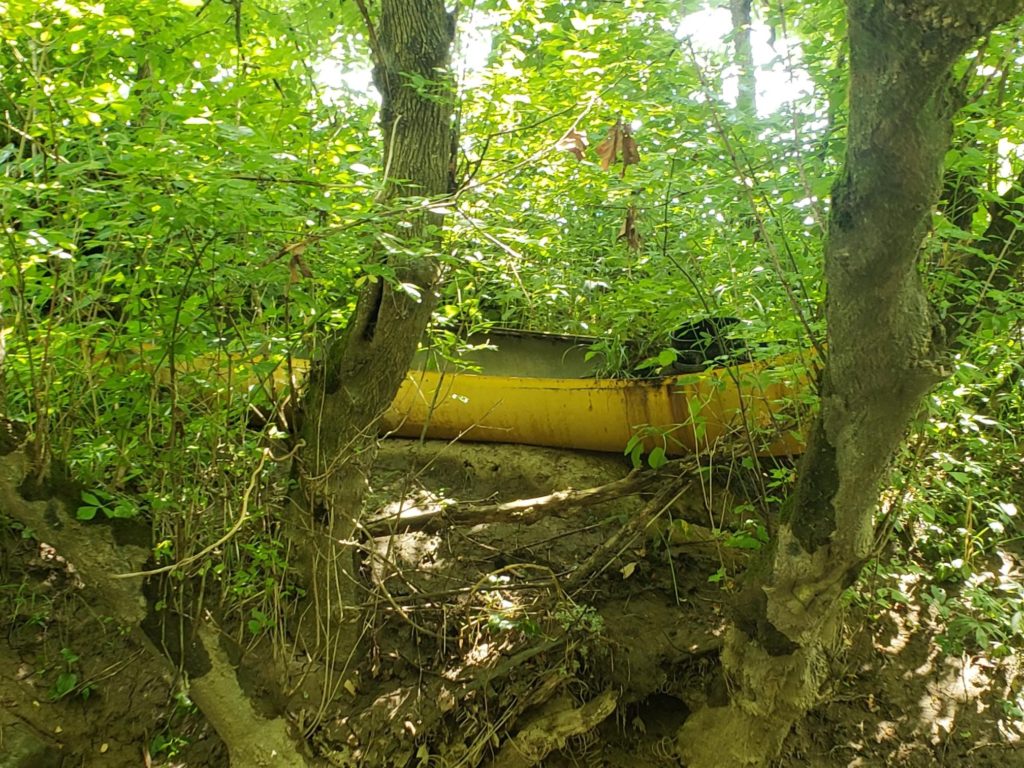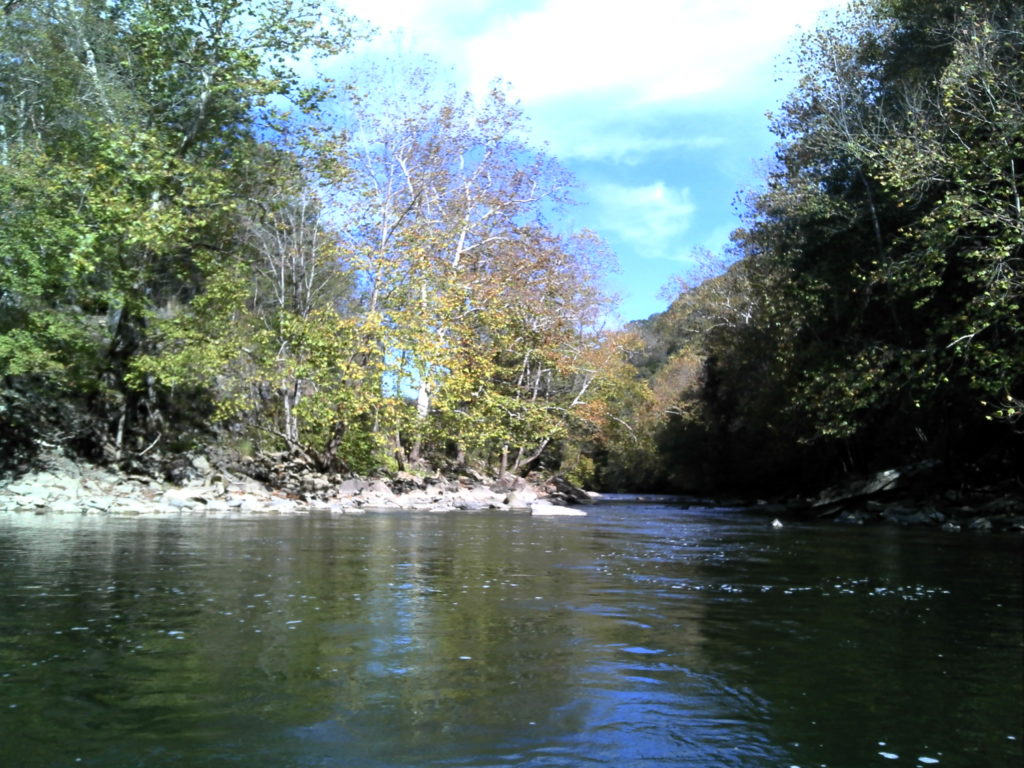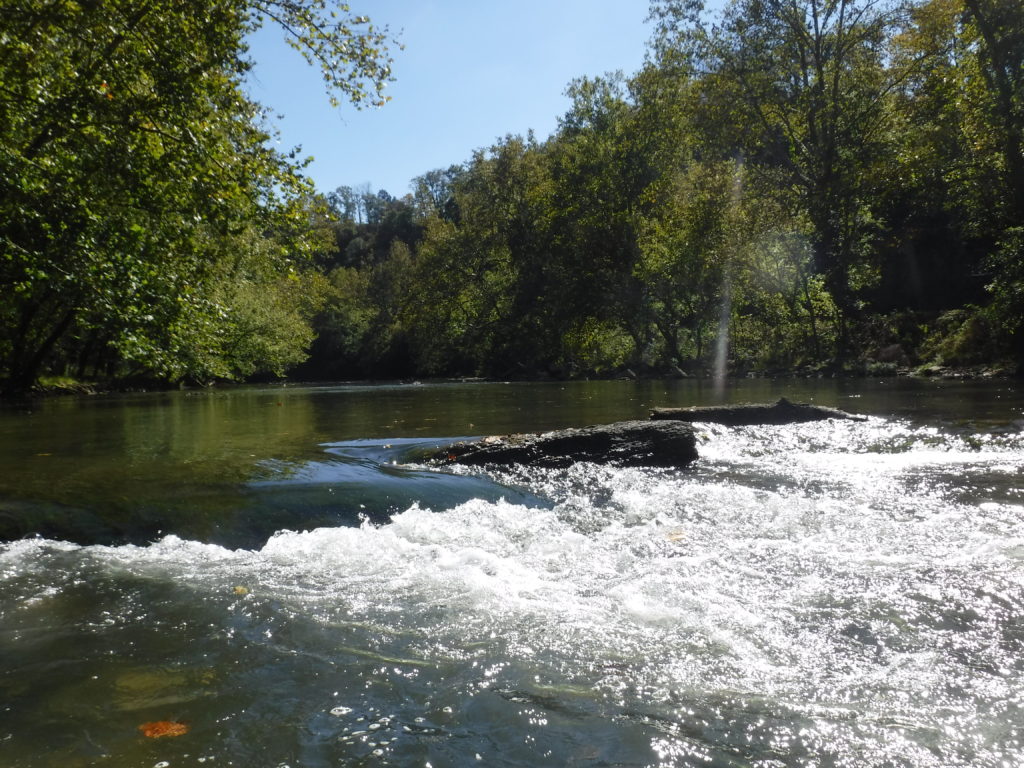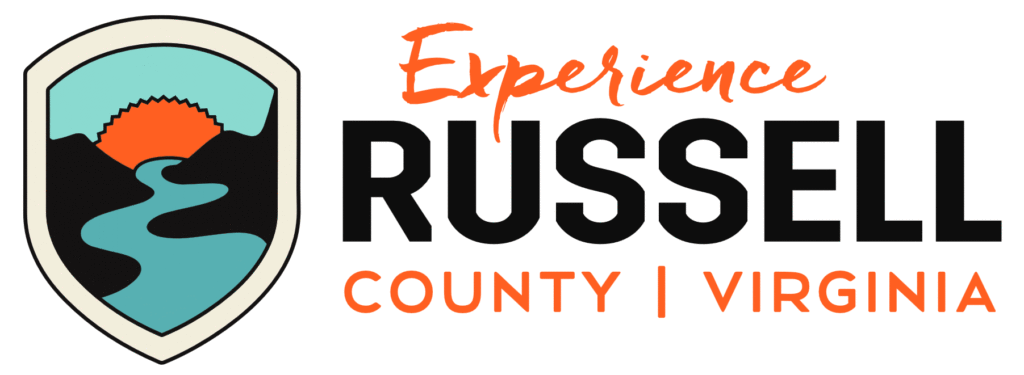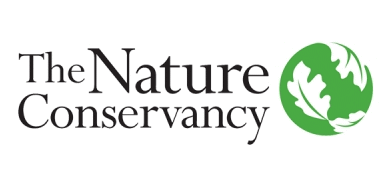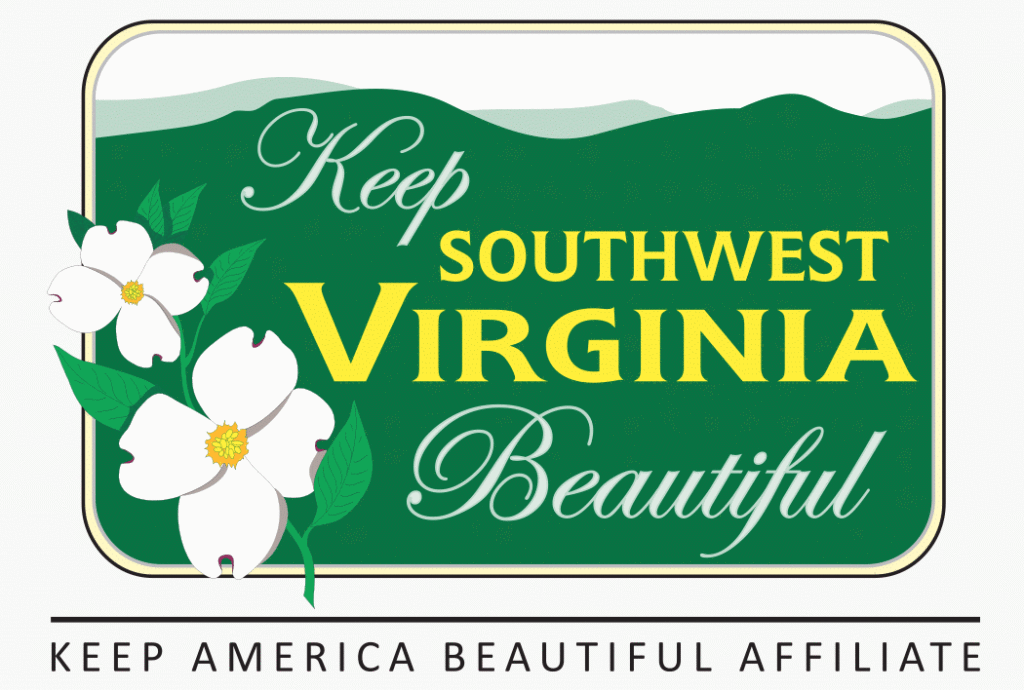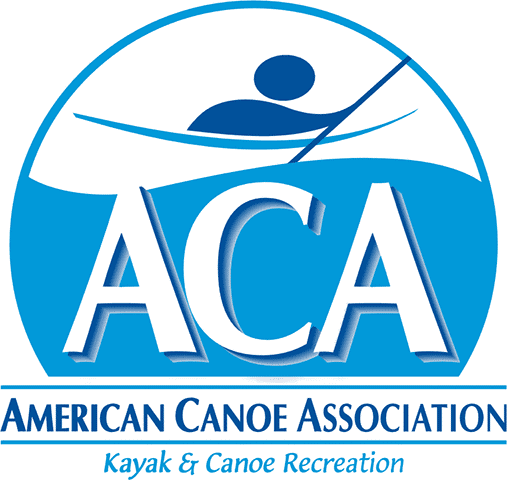2024 Cleanup – Phase VI
We plan to be back in Tazewell County on the Clinch River again in 2024, finishing the work we started in 2023. Depending on the number and severity of high-water events this year, we may plan another maintenance sweep of the river in Russell County as well. In addition, we have unverified information that significant dumping has occurred in the Scott and Lee Counties portion of the river, so we will complete a spring reconnaissance and hope to clean-up those portions of the river in Scott and Lee.
We also hope to complete a reconnaissance and cleanup plan for the accessible sections of the Powell River in Wise and Lee counties. The Nature Conservancy has an interest in the Powell due its biodiversity. We hope to begin cleanup of the Powell in late 2025 and continue through 2026.
StreamSweepers recently convened a scoping conference at Breaks Interstate Park with stakeholders from Southwestern Virginia, Eastern Kentucky, and Southeastern West Virginia. Our objective was to explore the concept of creating the consortium with the scale and gravitas to match the magnitude of the problems in the tributaries in the Big Sandy River watershed after disastrous flooding in the area in recent years. As conceived, the consortium will possibly be a new non-profit organization focused on a multi-state cleanup project with the goal of nurturing economic and job development in communities navigating the transition from a coal economy. We expect to start an assessment of the scale of such a project and continue planning in 2024.
2023 Cleanup – Phase V
2023 was to be our final year of a five-year project on the Clinch River. We started the season in the early spring with a reexamination of the sections of the river previously cleaned in Russell County and an assessment of the upstream section in Tazewell County. Sweepers documented a number of additional tires in Russell that were either washed down or revealed in the sediment by high-water events experienced in the winter and early spring. A maintenance sweep of the Russell County section was performed in May and June and removed 394 tires and 13,870 lbs. of other trash.
In June, Sweepers joined The Nature Conservancy, the Virginia Department of Forestry, and other volunteers for a day of cleaning up the Blue Bell Island Trail along the Clinch River in St. Paul, Virginia. Two Sweepers also assisted with a volunteer clean-up day on the Scott County section of the Clinch in association with Natural Tunnel State Park.
Sweepers then moved on to the section of the river in Tazewell County. The spring assessment of this section, which was conducted from kayaks in murky water, indicated a substantial number or tires, appliances, and other trash.
Our goal was to clean 10-15 miles of river in Tazewell County. Due to the shallower nature of the river in Tazewell as it approaches its headwaters, we knew we would need to do a lot of the work on foot, walking the riverbanks and using the canoes to float tires and trash to pick-up points. But, when Sweepers got into the river, they discovered another part of the story: Tires and trash four- and five- layers deep in the sediment. We were only able to cover a few hundred yards of river per day before our canoes and trailers are full. As of the end of November, we cleaned 3.2 miles in Tazewell County and removed 1,384 tires and over 23,800 lbs. of other trash, almost 4 tons of which came out of one .63-mile section. This year, we launched a water sampling and testing effort on the Clinch River, in partnership with the University of Virginia at Wise, the National Institutes for Health, and The Nature Conservancy. Water samples were collected and a student intern at UVA-Wise performed some simple tests and prepared water samples to be delivered to scientists at NIH, who will test for endocrine-disrupting chemicals. Endocrine disruptors are found in many everyday products, including some plastic bottles and containers, liners of metal food cans, detergents, flame retardants, food, toys, cosmetics, and pesticides. Some of these chemicals, such as PFAs, BPAs, and PCBs are slow to break-down in the environment and cause adverse effects in animals. The Nature Conservancy is especially concerned about the role of EDCs on the decreasing population of freshwater Appalachian Monkeyface mussels in the Clinch River.
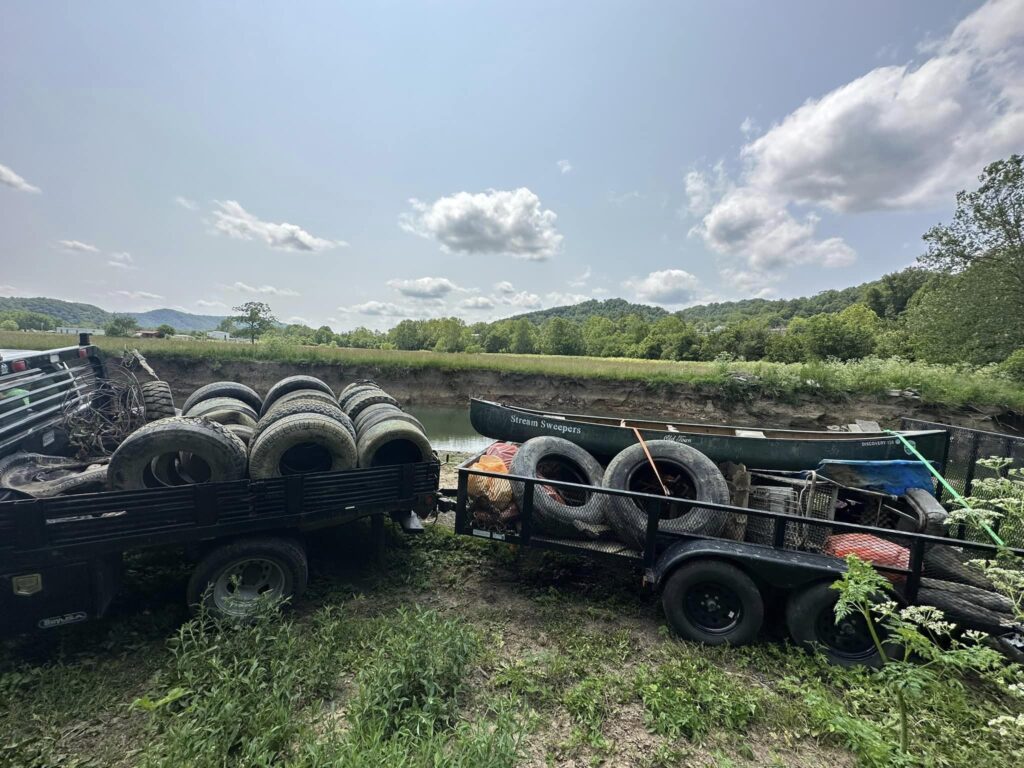
2022 Cleanup – Phase IV
This year, thanks to our funders, we purchased two new trailers – one for hauling canoes and the other, a dual-axle utility trailer for hauling tires and trash. We also received a heavy-duty three-quarter ton Ford truck donated by the Tennessee Valley Authority, a long-time supporter of our work.
We employed 12 Sweepers this year, five of whom were returning for their second or third year as project participants. Wilder Meade, returning for this third year as a Sweeper, and Andy Satterwhite, returning for his second year, were promoted to On-Water Manager, responsible for directing the work and ensuring the safety of two crews of Sweepers. Starting in February and wearing wetsuits, Wilder and Andy paddled and assessed 43.8 miles of river, enabling clean-up work to start in early May as soon as the water temperatures were safe for Sweepers to get in the river.
Storms and high water, some of which caused catastrophic flooding in other areas, though not on the Clinch, interrupted our ability to work in the river and required us to re-clean some areas. We again extended our season in 2022, keeping a crew of Sweepers working through the end of October. By the close of this season, Sweepers had removed 2,243 tires, and 50,525 pounds of trash, cleaning and remediating more than 36 miles of the Clinch River in Russell County.
The Clinch River Clean-up Project gained a new sponsor this year – Bass Pro Shops, which donated $2,500 worth of gear, including wet suits, gloves, safety equipment, and a winch.
StreamSweepers were recognized by the Clinch River Valley Initiative, Upper Tennessee River Roundtable, the Virginia Department of Conservation and Recreation, and the Clinch River State Park for their hard work and dedication with a gift of care packages including dry bags, hydration bottles and cups, snacks, and more.
The Growing Smart on High Knob campaign, which is led by the University of Virginia’s College at Wise and made possible with funding from the Virginia Environmental Endowment, featured StreamSweepers in a video about paddling responsibly in the High Knob Region of Southwest Virginia.

2021 Cleanup – Phase III
With additional funding and several new partnerships in 2021, we were able to hire a second crew of Sweepers and extend the season through mid-October. The added crew and extended season enabled us to increase the number of river miles cleaned, which was particularly significant since we had to re-assess and clean portions of the river cleaned in 2020 due to major flooding earlier in the year. Sweepers cleaned over 148 miles of the Clinch and removed 1,677 tires and over 50,000 lbs of trash in 2021!
2020 Cleanup – Phase II
Despite COVID-19 related setbacks, 2020 proved to be our best year yet!
Tires: 1077
Trash: 22190 lbs
Miles 98.15
We had an immensely successful year in 2021 with our AmeriCorps partners and local SWVA support.
2019 Cleanup – Phase I
2019 was the first of three seasons of the Clinch river cleanup to comprehensively remove large and small junk from the riverbed and banks.
12 Sweepers were employed from St. Paul, Coeburn, Wise, Lebanon, and surrounding.
They cleaned about 13.2 miles from the Old Castlewood boat launch to the Clinch’s confluence with the Guest River just above the Millers Yard boat Launch.
Sweepers removed 1006 tires (which weigh approximately 17.6 tons) and 14,260 lbs (7.13 tons) of other trash including appliances and electronics
2017/2018 Assessments
Sweepers used GPS units to mark health indicators along 60 miles of river, as standardized by the USDA such as the height and geometry of the bank, the percentage of river covered by a canopy, and the composition of the river bed, to name a few. Click here to learn about our specific assessment protocol. Totals for these variables are shown as red, yellow, and green to indicate low, moderate, and high resiliency.
This map shows river health defined as the ability to maintain its structure (organization) and function (vigor) over time in the face of external stress (resilience). (An example of an external stress would be flooding.)
Partners
StreamSweepers is thrilled to be working in partnership with the Richard and Leslie Gilliam Foundation, Dominion Energy, TVA, Upper Tennessee River Roundtable, Keep SWVA Beautiful, the Nature Conservancy, VDGIF, the Clinch River Valley Initiative, the Russell County Board of Supervisors, the Town of St. Paul and the many local businesses and organizations who are involved in this multi-year effort to assess and clean up ~60 miles of river flowing through Russell County, VA.
Any other parties wishing to contribute either staff, funds, or equipment should contact Maddie Gordon, Clinch River Project Manager.




